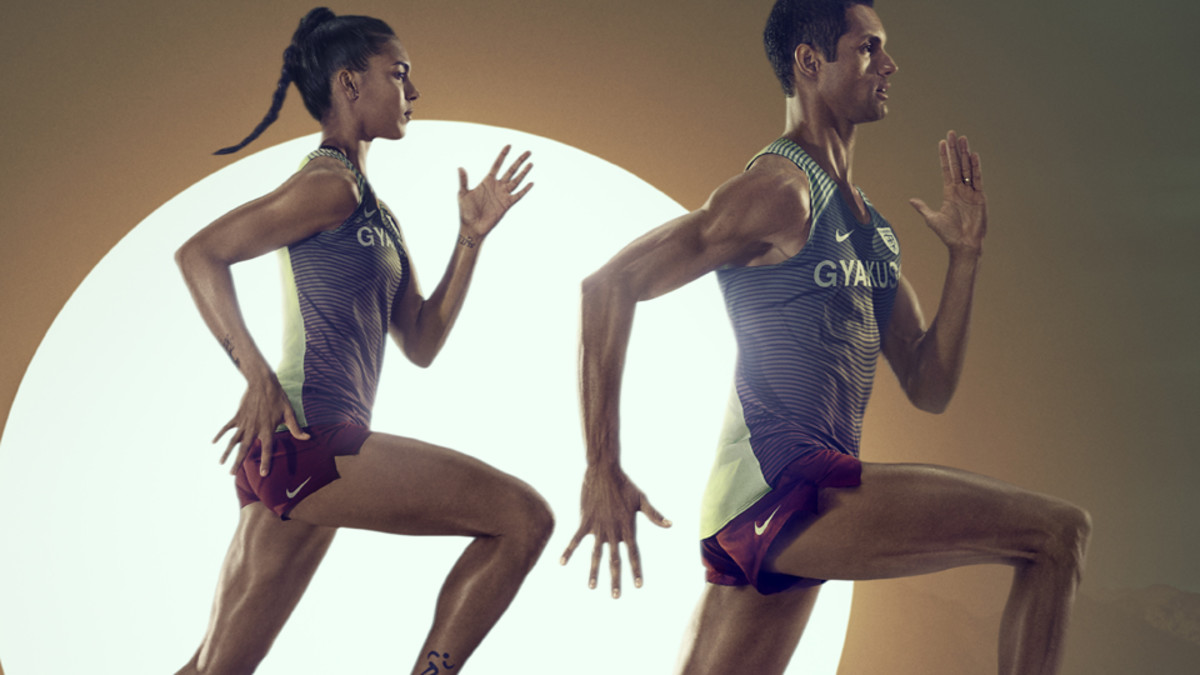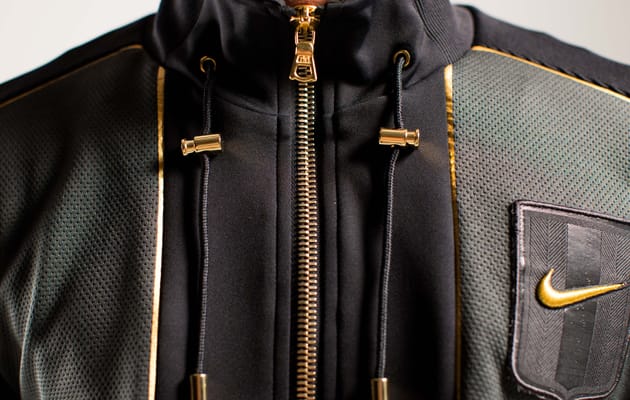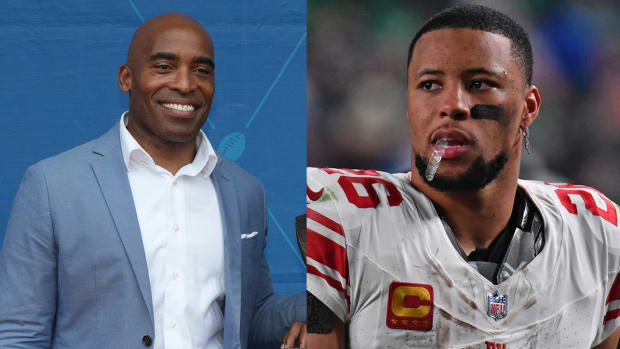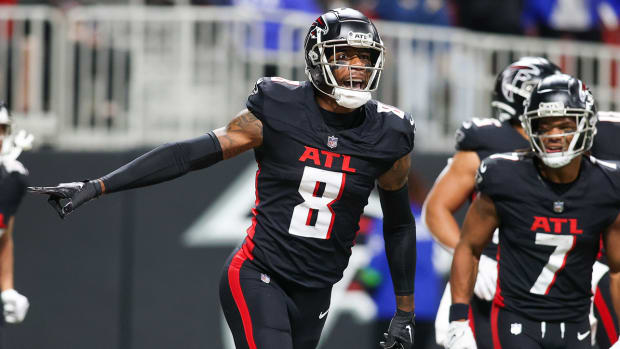NikeLab: The style of designing forward-looking performance apparel
Sports-centric product line don’t often feature British fashion designer Kim Jones reimagining the Nike Windrunner jacket, Japanese designer Jun Takahashi creating Rio de Janeiro-inspired running shorts and tennis legend Roger Federer putting his fashion spin on off-the-court apparel. But that’s what NikeLab is for, senior design director Jarrett Reynolds tells SI.com.
“Our job is to be the incubator for the future at Nike,” he says. “Whether new technology, what we design or a new way to work with a collaborator. I do think that our job in our context of what we are doing at Nike is moving (design) forward.”
And that movement starts to blur the line between performance apparel and performance fashion. “I don’t think we can completely disconnect performance and aesthetics,” Reynolds says. “Our starting point when we create a product is solving a problem and that could be for on pitch or off. We do that, I hope, in a way that is also stunning and beautiful. But if we started just about the aesthetics, I don’t think it would be right for Nike. It isn’t just performance or just fashion, I think it is maybe both.”
Reynolds knows NikeLab creations live in both worlds, even when a product gets designed for performance. But he’s just fine with that. “As an example, a lot of people may buy (a running garment) and might not run it, but a lot of people ended up running because of it,” Reynolds says. “We know that a lot of stuff we make will not be used for its intended purpose, but if we are true to solving real problems it is cool if someone takes a running short and does something else in it.”
Even with performance always at the forefront, the collaborations with the fashion world often lead the product into a style-centric aesthetic. The NikeLab “summer of sport” has included Riccardo Tisci using Dri-Fit and Flyknit tech to reinvent training gear, Olivier Rousteing gaining inspiration from historic Nike designs for a soccer collection around Euro 2016, Federer giving us an off-the-court collection that launched ahead of Wimbledon, Kim Jones creating the most packable streetwear-meets-sportswear apparel he could create and, the most recent unveiling on July 28, Takahashi with a track and field-inspired running line that ties to Rio.
“I think if you could sum up what we are doing with the summer of sport is taking the opportunity to redefine the boundaries between sport and culture,” Reynolds says. “We worked with some amazing partners this summer and all were propelled forward by different things. What’s cool is there are different executions, different explorations.”
With both eyes focused on the future of design, whether technology or aesthetics, Reynolds says NikeLab design would be remiss without at least a glance at the past. “It depends on the project, but one thing that is amazing about Nike is it is not just about innovation, but also about culture,” he says. “Things like the Air Force 1 in footwear are totally iconic and we would be crazy not to look back and reinterpret that in a new way.”
Take the Jones designs of this summer. Instead of choosing a random jacket to make packable, they looked at the Windrunner, the most well known jacket style from Nike. “We took a look back at history and reinterpreted (the Windrunner) in an insanely lightweight material that packs up into almost nothing.”
The result was a modern-looking piece of apparel, but one rooted in a culture of sport performance. Jones says the merging of culture and travel as a reference was key to his line, but the meshing of streetwear and sportswear was essential too “because they are real. They’re in everyone’s life and filtered into everything.”
Tisci says the line of training apparel was a new challenge. “It was interesting … a little bit of a difficult process because to make something that is very dynamic, to do sport and to do activity, and make it strongly recognizable — a fashion statement — is not easy,” he says.
Reynolds says starting with technology really allows for “new aesthetics” that create a fresh approach in the world of fashion and culture. “We are aware of everything that is going on and we trust that we are going to make stuff that looks great,” he says. “I would not say it is our intention to make stuff that is just about looking different. The mantra from a collection like Gyakusou (from Takahashi) is to propel running forward and create a modern look. It is more about connecting with what is happening with running.”
Using the information from Nike’s mainline design team—whether knowledge of materials, technology or even consumer information—NikeLab then remixes it and distorts it in a way that is “still pure running performance. Sometimes it looks slightly different, but it still connects back.”
Tim Newcomb covers sports aesthetics—stadiums to sneakers—and training for Sports Illustrated. Follow him on Twitter at @tdnewcomb.












